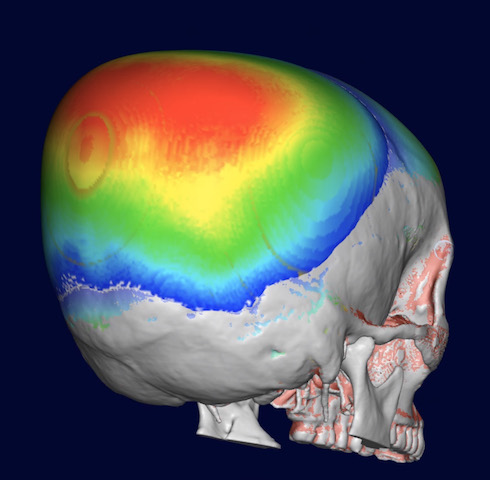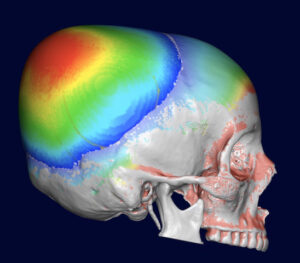Custom skull implants designed from a 3D CT scan are the most effective method for creating any type of aesthetic head augmentation. While designing such implants seems simple, it is not. The large convex surfaces of the skull offers ample opportunity for implant coverage and varying thicknesses but there are no design guidelines in any patient as to what they should be for the effect they want to achieve.
One of the unique effects of the skull is its large convex surface. This is unlike what you see in the face where the bony surface areas are smaller and the topography more complex. The topography of the skull is simpler but the surface areas coverage needed to obtain augmentative effects is much bigger.
The most common oversight in skull implant design is to make its footprint or surface area coverage too small. One learns with enough experience that surface area coverage in skull augmentation is as important as the implant’s thicknesses. But in looking at skull implant designs on paper this is really a 2D rendering and, when viewed alone, does not provide a true 3D assessment of its effect.

The other important assessment method is a visual one that is more of an impression rather than qualitative one. The one feature that I have learned about skull implant designs is that they must look like they belong there. They should appear as a natural extension of the skull’s shape and should look like this is the way the skull developed naturally. It should not look out of place or appear like an abnormality of the skull’s shape.
There are numerous design considerations in aesthetic skull implants. But topographic shape assessment by color thickness mapping and an eye for a natural flow of the skull into the implant with a pleasing shape are two of the most important.
Dr. Barry Eppley
Indianapolis, Indiana




